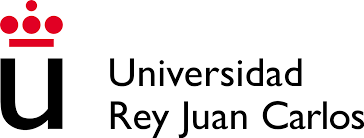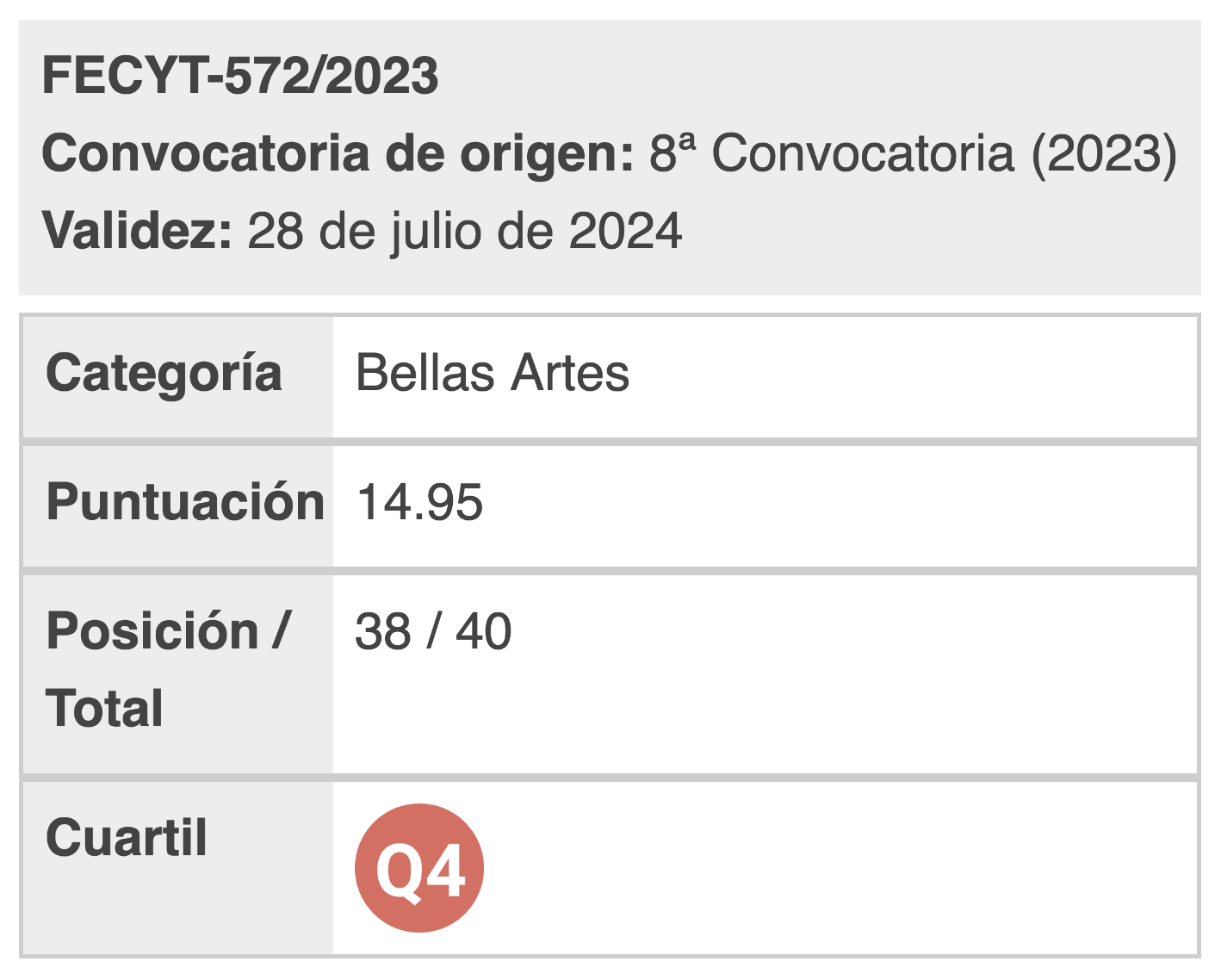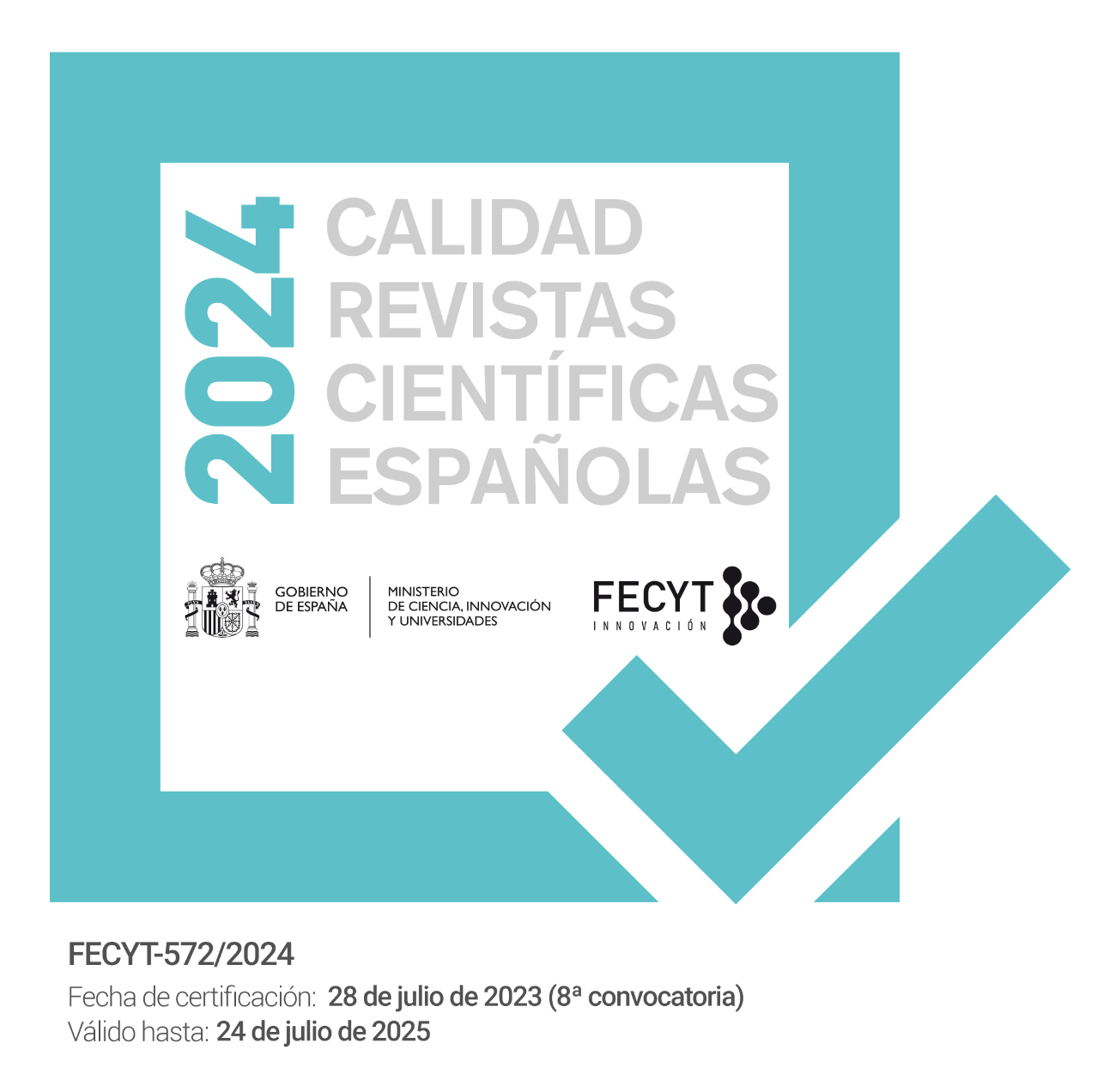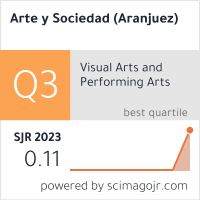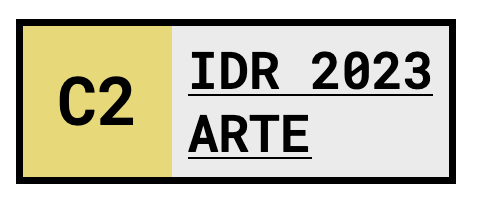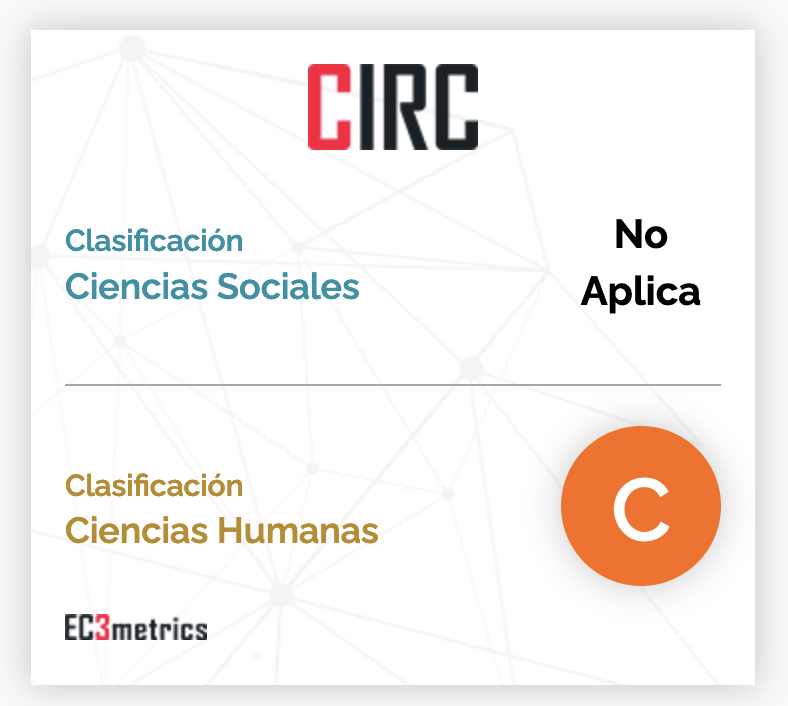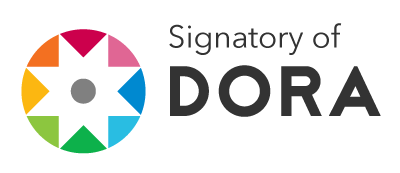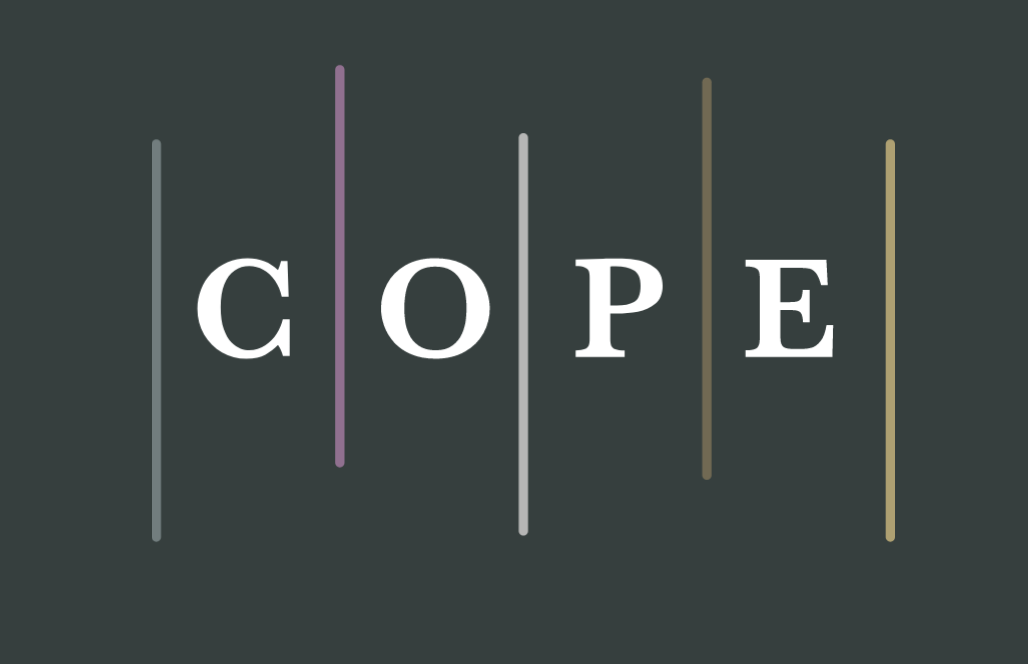The interactive multimedia video article
An Innovative Format for the Scientific Community
DOI:
https://doi.org/10.5281/zenodo.7654680Keywords:
Scientific communication, video article,, IMRaD, e-learning, audiovisual productionAbstract
The study explains the creative process to compose an innovative scientific communication product: Interactive Multimedia Video Article. The result is a pilot product based on the IMRaD research format and represents an alternative to the traditional research article.
References
Abraham, G. (2020). The importance of science communication. Metallography, Microstructure, and Analysis, 9, 3-4 doi:https://doi.org/10.1007/s13632-020-00613-w
APA. (2010). Manual of the american psychological association. Washington DC: American Psychological Association.
Arcila-Calderón, C., Calderín-Cruz, M., & Sánchez-Holgado, P. (2019). Adopción de redes sociales por revistas científicas de ciencias sociales. El Profesional De La Información, 28(1) doi:https://doi.org//10.3145/epi.2019.ene.05
Castillo-Esparcia, A. (2012). Investigación e investigadores. las revistas científicas como instrumento de comunicación. Vivat Academia, (117E), 1002-1017.
doi:http://dx.doi.org/10.15178/va.2011.117E.1002-1017
Christlieb, M., & Wijayutaunga, R. (2019). The importance of science communication in cancer research: An interview with Martin Christilieb. Future Oncology, 15(20), 2323-2325 doi: https://doi.org/10.2217/fon-2018-0138
Cook, M. P. (2006). Visual representations in science education: The influence of prior knowledge and cognitive load theory on instructional design principles. Science Education, 90(6), 1073-1091.
Duart, J. M., & Mengual-Andrés, S. (2014). Impacto de la sociedad del conocimiento en la universidad y en la comunicación científica. RELIEVE.Revista Electrónica De Investigación Y Evaluación Educativa, 20(2), 1-12. doi:https://doi.org/10.7203/relieve.20.2.4343
Elsevier. (2019). Video articles. Recuperado de https://www.elsevier.com/authors/author-resources/research-elements/video-articles
European Commission. (2016). Open innovation open science open to the world. Luxembourg: Research and Innovation. doi:https://doi.org/10.2777/061652
European Commission. (2018). Turning fair into reality (Research and Innovation ed.) Luxembourg. doi:https://doi.org/10.2777/1524
FECYT. (2018). Percepción social de la ciencia y la tecnología en España. Ministerio de ciencia, innovación y universidades.
Recuperado de https://icono.fecyt.es/sites/default/files/filepublicaciones/18/epscyt2018_informe_0.pdf
Ferreras-Fernández, T., & Merlo-Vega, J. A. (2015). Repositorios de acceso abierto: Un nuevo modelo de comunicación científica. la revista de la sociedad ORL CLCR en el repositorio Gredos. Open Access Repositories: A New Model of Scientific Communication. The Revista De La Sociedad ORL CLCR in Gredos Repository, Recuperado de http://hdl.handle.net/10366/125467
Flanagin, A. J., & Metzger, M. J. (2013). Trusting expert-versus user-generated ratings online: The role of information volume, valence, and consumer characteristics. Computers in Human Behavior, 29(4), 1626-1634. doi:https://doi.org/10.1016/j.chb.2013.02.001
García, F., Portillo, J., Romo, J., & Benito, M. (2007). Nativos digitales y modelos de aprendizaje. Paper presented at the Spdece.
García-Peñalvo, F. J. (2015). Diseminación y divulgación científica. Paper presented at the Diseminación Y Divulgación Científica, Recuperado de http://repositorio.grial.eu/handle/grial/500
Gértrudix-Barrio, M., Rajas-Fernández, M., & Álvarez-García, S. (2017). Metodología de producción para el desarrollo de contenidos audiovisuales y multimedia para MOOC. RIED.Revista Iberoamericana De Educación a Distancia, 20(1), 183-203. doi:https://doi.org/10.5944/ried.20.1.16691
Gertrudix-Barrio, M., Romero-Luis, J., & Barrera-Muro, D. (2018). Método científico y datos abiertos en educación- videoartículo interactivo sobre el proyecto escuelas comciencia. Revista Cine, Imagen Ciencia, 2, 12-24.
Recuperado de http://revista.revistacineimagenciencia.es/numero02/01_gertrudixbarrio_romeroluis_barrermuro_12-24.pdf
Guo, P. J., Kim, J., & Rubin, R. (2014). How video production affects student engagement: An empirical study of MOOC videos. Paper presented at the Proceedings of the First ACM Conference on Learning@ Scale Conference, 41-50. doi:http://dx.doi.org/10.1145/2556325.2566239
Gyori, B., & Charles, M. (2018). Designing journalists: Teaching journalism students to think like web designers. Journalism & Mass Communication Educator, 73(2), 200-217. doi:https://doi.org/10.1177/1077695817713424
Hansch, A., Hillers, L., McConachie, K., Newman, C., Schildhauer, T., & Schmidt, J. P. (2015). Video and online learning: Critical reflections and findings from the field. HIIG Discussion Paper Series, doi:https://dx.doi.org/10.2139/ssrn.2577882
Herrlinger, S., Höffler, T. N., Opfermann, M., & Leutner, D. (2017). When do pictures help learning from expository text? multimedia and modality effects in primary schools. Research in Science Education, 47(3), 685-704. doi:https://doi.org/10.1007/s11165-016-9525-y
Klynt. (2019). Klynt. Recuperado de http://www.klynt.net
López-López, E., Tobón, S., & Juárez-Hezernández, L. G. (2019). Escala para evaluar artículos científicos en ciencias sociales y humanas-EACSH. REICE: Revista Iberoamericana Sobre Calidad, Eficacia Y Cambio En Educación, 17(4), 111-125. doi:http://dx.doi.org/10.15366/reice2019.17.4.006
Grupo Ciberimaginario (Producer), & Manuel Gértrudix (Director). (2018, Ene, 9,). Escuelas conciencia - reportaje documental - grupo ciberimaginario. [Video/DVD]. Recuperado de https://www.youtube.com/watch?v=W6V1ARFhS4I
Moreno, I. (2012). Narrativa hipermedia y transmedia. Creatividad Y Discursos Hipermedia, 21-40. Recuperado de https://eprints.ucm.es/45471/1/NarrativaHyT-Isidro%20Moreno.pdf
Moreno, R., & Mayer, R. (2007). Interactive multimodal learning environments. Educational Psychology Review, 19(3), 309-326. doi:https://doi.org/10.1007/s10648-007-9047-2
Plass, J. L., Homer, B. D., & Hayward, E. O. (2009). Design factors for educationally effective animations and simulations. Journal of Computing in Higher Education, 21(1), 31-61. doi:https://doi.org/10.1007/s12528-009-9011-x
Rajas Fernández, M., & Gertrudix Barrio, M. (2016). Narrativa audiovisual: Producción de vídeos colaborativos para MOOC. Opción: Revista De Ciencias Humanas Y Sociales, (12), 349-374.
Ramírez-Montoya, M. S. (2015). Acceso abierto y su repercusión en la sociedad del conocimiento: Reflexiones de casos prácticos en latinoamérica. Education in the Knowledge Society, 16(1), 103-118. doi:http://dx.doi.org/10.14201/eks2015161103118
Raptmedia. (2019). Rapt. Retrieved from http://www.raptmedia.com
Reyes, M. C., & Trentin, G. (2019). Breaking sequentiality: An interactive MOOC. Paper presented at the European Conference on E-Learning, 674-XVI. doi:https://doir.org/10.34190/EEL.19.110
Rigo, D. Y. (2014). Aprender y enseñar a través de imágenes: Desafío educativo. ASRI: Arte Y Sociedad.Revista De Investigación, (6), 6. Recuperado de http://asri.eumed.net/6/educacion-imagenes.html
Rosenfeld, L., & Morville, P. (2002). Information architecture for the world wide web " O'Reilly Media, Inc.".
Salinas, J. (1996). Multimedia en los procesos de enseñanza-aprendizaje: Elementos de discusión. Encuentro De Computación Educativa, 2-4. Recuperado de http://bit.ly/39cYGCJ
Sankey, M., Birch, D., & Gardiner, M. (2010). Engaging students through multimodal learning environments: The journey continues. Paper presented at the Proceedings ASCILITE 2010: 27th Annual Conference of the Australasian Society for Computers in Learning in Tertiary Education: Curriculum, Technology and Transformation for an Unknown Future, 852-863. Recuperado de http://ascilite.org/conferences/sydney10/procs/Sankey-full.pdf
Siroker, D., & Koomen, P. (2013). A/B testing: The most powerful way to turn clicks into customers John Wiley & Sons.
Torres-Mancera, D., & Gago-Saldaña, D. (2014). Los MOOC y su papel en la creación de comunidades de aprendizaje y participación. RIED. Revista Iberoamericana De Educación a Distancia, 17(1), 13-34. doi:https://doi.org/10.5944/ried.17.1.11570
Vázquez-Cano, E. (2013). El videoartículo: Nuevo formato de divulgación en revistas científicas y su integración en MOOCs. Comunicar, 21(41), 83-91. doi:http://dx.doi.org/10.3916/C44-2015-08
Walsh, M. (2009). Pedagogic potentials of multimodal literacy. Handbook of research on new media literacy at the K-12 level: Issues and challenges (pp. 32-47) IGI Global. doi:10.4018/978-1-60566-120-9.ch003
Wirewax. (2019). Wirewax. Recuperado de https://www.wirewax.com

Published
How to Cite
Issue
Section
License

This work is licensed under a Creative Commons Attribution 4.0 International License.
You are free to:
Share — copy and redistribute the material in any medium or format.
Adapt — remix, transform, and build on the material for any purpose, including commercial.
Attribution — You must properly acknowledge the authorship, provide a link to the license, and indicate if any changes have been made.
You may do so in any reasonable manner, but not in any way that suggests that you endorse or receive any endorsement by the licensor for your use.
No additional restrictions — You may not apply legal terms or technological measures that legally restrict you from doing what the license allows.

